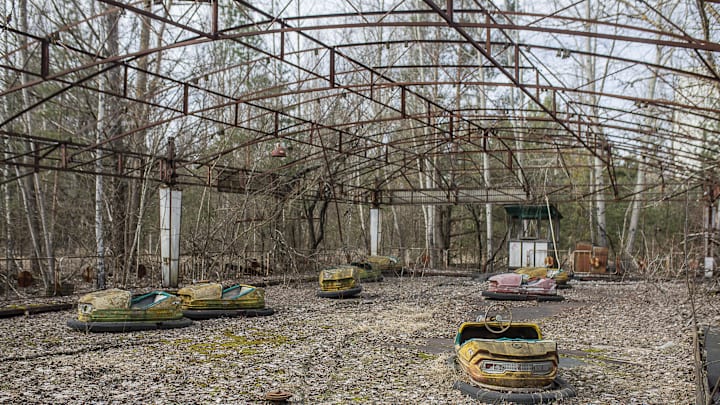How Chernobyl's nuclear meltdown occurred
When looking at how the disaster at Chernobyl transpired, there isn't simply one singular reason that acted as the catalyst for the meltdown. Instead, it was a myriad of issues that came together to create the perfect storm that would lead to the world's worst nuclear disaster in history.
On April 26, 1986, Chernobyl's reactor number 4 reached critical levels, which caused the reactor to suffer a steam explosion that saw the release of radioactive materials into the air for as far as 150,000 kilometers, even reaching as far as Canada's border.
The investigation into the cause of Chernobyl's reactor 4 meltdown was the dual combination of poor design of the reactor itself, as well as human error. Safety regulations when designing a nuclear reactor call for the core to be walled off by multiple barriers to block the center off and keep it from interacting with the environment. The first of these barriers are fuel rods that are filled with solid ceramic packed inside zirconium tubes. From there, the second barrier involves the zirconium fuel rods being placed inside a steel container called a pressure vessel, which is filled with water to act as a coolant. The third and final barrier is made of a stalwart concrete containment structure that keeps the radioactive materials from escaping in the case of an emergency.
On top of that, Chernobyl's reactor 4 was an RBMK design. This type of reactor was of Russian make, issued by the Soviet Union, and used mostly by Russian nuclear power plants. This kind of reactor is recognized by its use of graphite as a moderator, whilst VVER reactors use pressurized light water as a coolant and moderator. VVER reactors are considered much safer than RBMK reactors because they do not use graphite as a moderator. Because of this, VVER reactors are the most commonly used within nuclear power plants all across the world. The RBMK design was, even at the time, seen as something that could become a safety hazard but was overlooked due to how easily they could be installed and the large amount of power they could produce in a short time.
The second issue in Chernobyl's infamous meltdown was how inadequately Reactor 4's overseers were trained for the job. In the effort to get people on the job and working with the reactor as soon as possible, the workers within Chernobyl were not given the proper time nor training to get a firm grasp on the ins and outs of the task at hand. This, in conjunction with the lax design of the RBMK reactor, led to Chernobyl's catastrophic meltdown that we know today.
How is Chernobyl's Exclusion Zone fairing now?

39 years after the fallout of reactor 4, Chernobyl's Exclusion Zone (CEZ) is a far cry from the irradiated wasteland it was nearly four decades ago. By 2011, the area was deemed safe enough to allow visits from tourists. To ensure that the area would have as little lingering radiation as possible, a protective system called the New Safe Confinement was built over reactor 4 to seal off its exposure to the outside world. The installation began in 2016, and three years later in 2019 it was finally completed. The New Safe Confinement is projected to keep radiation from leaking out for the next 100 years.

With numerous decades free of human influence, it has allowed for a flora and fauna to thrive within the Chernobyl Exclusion Zone. Though there have been some sightings of animals that show deviance from the expected averages of their species, many of the creatures that live within the zone are healthy and thriving. The zone boasts an impressive amount of biodiversity within its radius, such brown bears, bison, lynx, horses, moose, and boars. Wolves within the Chernobyl Exclusion Zone were even found to have a resistance to cancer as a result of the radiation that has affected their cellular makeup.
It would appear that despite having the threat of radiation still lingering through the zone, many of the wildlife has actually benefited from not having to deal with human contact, allowed to thrive on their own terms as they were originally created to.

Is the Chernobyl Exclusion Zone safe to visit?
While the Chornobyl Exclusion Zone will never truly be radiation-free, it is safe enough now to allow tourists to visit the area without massive fear of developing any life-threatening problems. People have been taking trips to the site ever since 2011, immersing themselves in the fascinating history of what can happen when caution is thrown to the wind in favor of financial gain.
If Chernobyl has taught humanity anything, it is that man is never truly in control. May it be a lesson not soon forgotten.
